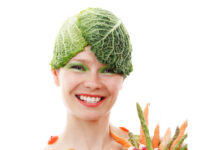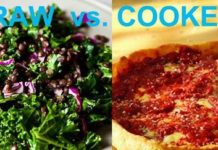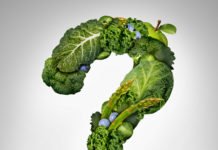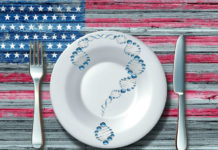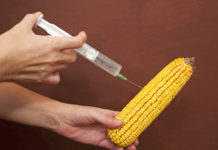Juicing is about more than just better health.
Juicing is a wonderful way to improve your health and help maintain a nutritious raw lifestyle. But remember, learning how to live differently takes more knowledge than you may realize. There are some things you take for granted, coming from a cooked-food reality where the only vegetable juice came from a can, to a raw food universe, where everything you do, everything you let pass your lips, makes a huge difference. For example, in the cooked food reality, you think nothing of eating processed foods. But in the raw universe, we avoid processed foods. And guess what – fresh juice IS a highly processed food. One glass of vegetable juice contains the concentrated nutrition from perhaps a dozen different vegetables – more than you would normally ever sit down at a table and chew up in a whole day in your former life!
Though they are a delicious and miraculous part of a raw lifestyle, and nothing at all like pasteurized and pesticide-laden commercial juice drinks, we must remember that consuming the concentrated juices of a dozen plants at one sitting is also NOT 100% natural – so learn to take advantage of the concentrated energy and nutrition in your juices with knowledge and respect.
Please take the time to study and read all you can about raw food nutrition and juicing as you embark on this journey – and don’t take any one person’s word for the truth – including me! Let own own research and inner wisdom guide you. There is a lot more to juicing than meets the eye, or the auger!
The Juicing Basics
- Try to use organically grown produce for greater nutritional density and to avoid pesticides and genetically modified foods. If you can’t get organics wash thoroughly with a vegetable wash, peel and avoid anything that is known to be heavily sprayed (strawberries, blueberries, bell peppers , etc.) or cannot be peeled (like berries).
- Wash all produce carefully with a good vegetable wash. Even organics have been sitting in trucks, handled by field hands and truckers and can have moldy, bruised or damaged parts.
- Peel oranges & grapefruits. These skins contain a toxic substance and taste bitter. Leave some of the thick white inside part of the peel since it is rich in bioflavonoids & vitamin C. Always peel imported tropical fruits since they are usually sprayed with chemicals. Peel any fruits or veggies that have been waxed.
- Remove pits before juicing. Seeds can be juiced, except for apple seeds which can be toxic.
- Be sure to juice all the stems and leaves with your fruits & vegetables – they are rich in nutrients are alkaline forming (except carrot and rhubarb greens which are toxic).
- Prepare your fruits and vegetables in advance by chopping to fit the mouth of your juicer. For single auger juicers like the Samson, chop hard vegetables (carrots) into smaller or thinner pieces so they go through easier.
- Don’t juice produce that is low in water content, like bananas and avocados. You can add these ingredients later in a blender.
- Drink juice on an empty stomach for best nutrient absorption. Remember to “chew” your juices – digestion start in the mouth!
- As nutritious and delicious as juice is, it is not a a good idea to use it as an ongoing meal replacement. (except during a controlled cleanse or detox).
- Get a quality juicer that is easy to use and clean. If it difficult and time-consuming to use you might not!
My Raw Food Juicing FAQs
- I get sleepy an hour or so after a smoothie or fruit juice.
What should I do? - I feel a little weak after juicing for awhile. Is that natural?
- What is the best time to drink fresh juice?
- What about organic versus commercial produce?
- I’ve heard that you can get parasites from eating raw food?
- I’ve heard that combining fruits with vegetables is bad?
- How long can I survive on raw juices?
- Should I throw away the pulp from the juicer?
- What is Intuitive Eating and how do I do it?
- How long can I keep juice in the refrigerator?
- When I juice a lot, I like to clean the juicer at the end
of the day instead of every time I use it. Is that OK?
Hypoglycemia – The Sugar Blues!
Most people that are starting on a raw food program should avoid fruit altogether – especially dried fruit (like raisins or dates) and fruit juices or fruit smoothies.
Fruit juices create a rapid rise in blood sugar. If you have a healthy digestive system, that wouldn’t be a problem – except that most people are on the Standard American Diet (SAD) do NOT have a healthy digestive system. In fact, they have been consuming far too much sugar for many years. As a result, today you may have a variety of conditions. Hypoglycemia is the one which causes your body to overreact to all the sugar you’ve been eating by overproducing insulin, resulting in a sugar crash – getting tired after drinking a sweet fruit smoothie or fruit juice for example. This is also true for people with any form of diabetes. In addition, you may be suffering from candidiasis. Candida can also make you feel tired or fatigued – and candida, a type of yeast, thrives on sugar!
So I usually suggest that when you start out juicing, at least for the first month, and maybe longer, you carefully monitor yourself. Begin with vegetable juices, avoiding high-sugar veggies like carrots and beets. My reaction to sugar is pretty under control now, but I still avoid carrots and beets. I learned to appreciate the natural alkaline taste of green veggies. Sometime I put one small carrot in green drink, especially if I am using a lot of kale and parsley.
If you don’t fall into one of the categories above, there may be no need for you to avoid fruit juices. The natural sugar in fruits, called fructose, can be easily assimilated, unlike table sugar, or glucose, which is harmful. Fructose has a low glycemic index (GI), which means that it doesn’t make the glucose level in the blood rise as fast and won’t spike your insulin as easily as high GI foods.
However, if you want to drink very sweet fruit juices like pineapple, grapes and mango, I recommend diluting them with water or with other less sweet juices, like fresh young Thai coconut juice – yummy. It is always a good idea to dilute fruit juices with water when giving them to young children.
One last caution regarding fruit juices! It is very tempting to use a lot of fruit juice for beginners – it is easy and it is sweet! That is your addiction talking, or maybe the inner voice of the hungry candida yeasts coursing through your bloodstream. You can get all the sugar your body needs without any fruit at all! In addition, too many fruits are loaded with citric acid. Though a weak acid, it actually can corrode your teeth if you drink a lot of fruit juices. If you do succumb to a juice fix, don’t beat yourself up – that is all part of changing to a new lifestyle. Just brush your teeth after!
Feeling Worse Before You Feel Better.
When you first start a raw food program, especially with juicing, your body finally has a chance to get rid of some of the toxins it has been holding onto for years or decades. In addition, you probably stopped getting your daily “fix” such as coffee, tea, or chocolate. So a variety of symptoms might occur. You may experience headaches or migraines, for example. Some people feel like they have a cold or the flu. You may feel weak and exhausted. This happens when your new healthier body discards the stored up toxins like caffeine or theobromine from your tissues and dumps them in your bloodstream for disposal. Until now, your immune system and elimination systems couldn’t keep up with the toxic intake you had daily from cooked food. When you consumed more toxins than you could eliminate, the rest got stored in your body, usually surrounded by fat cells to protect the body (one of the reasons some people get overweight). Now that your toxic intake is LESS than your body can eliminate, it can start eliminating those old stored-up toxins. This leads to better health as well as some weight loss. However, at first it can make you feel sick, because all those toxins in your bloodstream suddenly are just like an attack of a virus or infection, and your immune system may react to them in the same way. It is a natural thing and is OK.
When you have these symptoms, do not give up. Your body is going through a healing and cleansing process, which on average can take from one week to maybe 3 or 4 weeks, depending on the toxicity level in your body. Take this time to rest, and look forward to improved health and energy health ahead.
However, if you find this too uncomfortable, or if your work prevents you from taking it easy during this period, then you can slow down the process by reducing your juicing or consuming just a bit more cooked foods. I believe that if you maintain a 75% raw diet, your body can still eliminate toxins faster than you are eating them. however, the more cooked foods you eat, the slower you will detoxify – and the less symptoms you may have. Choose the path that is most likely to keep you going. Don’t push too yourself too hard or you may start to resent what you are doing, which can lead to giving up entirely.
Anytime is a good time to drink fresh juices.
Ideally, the best time to drink fresh juice is when you have an empty stomach — at least half an hour before a meal. This is when your body will get the best absorption of all the concentrated nutrition in your juice, wasting nothing. However, don’t hesitate to drink juice at any time – a good shot of concentrated energy and nutrition can never be a bad thing!
When cleansing, I like to make a fresh watermelon juice in the morning. I juice up the rind, the seeds – the works. There is so much energy in there that I won’t get hungry again until lunch. If you are avoiding sugar (see question 1), then start your day with a fresh green juice – but keep it simple and not too dense during a cleanse – like maybe just celery and cucumber.
Even when not doing a major cleanse, it recommend getting into the habit of having a juice fast regularly. Once a week would be a great idea! The night before make sure you don’t have anything to eat after 6:00 pm – THAT is when your 24- hour fast actually begins. Wake up to a nice watermelon juice, have a nice green juice for lunch and then have a simple green salad for dinner to break your fast.
Remember, when cleansing it is important to drink plenty of water throughout the day. It will also help your body to eliminate all the toxins entering your bloodstream to get some colonics or do some of your own enemas – but I will write on that subject another day! For the purposes of mild cleansing during one-day fast, you could get by without that.
Organic vs. commercial produce.
I believe in using only ORGANIC produce for your juicing. This is ESSENTIAL! When you make fresh juice, you are not only concentrating the vitamins, minerals and enzymes – you are concentrating any pesticide residue left on the plants. If the UNLABELED produce is genetically engineered, who know what you may be concentrating! Some people will say not to worry about this because the juicer naturally filters out pesticides, and since they are water soluable your body can eliminate them easily – but I disagree. You just don’t need this added grief when you are trying to cleanse and purify yourself and start a new healthier lifestyle. You also need as much of this concentrated nutrition as your body can absorb, and the denser nutrition found in organics helps (see my articles section).
If you can’t get organic produce where you live, or it is too expensive, you can have it shipped. Several web sites offer shipping. You can also subscribe to CSA Farms in some areas (community supported agriculture) – do a little online research to see if one is near you. if you must use commercial produce check out the tips under Juicing Basics on the right.
Another benefit of juicing organically is that you can use the pulp in other raw recipes! Don’t waste your pulp! Even after juicing it is rich in vitamins, minerals and all-important fiber. However, it has to be organic because when you juice produce, any pesticide residue or other toxins will end up concentrated in the pulp. When you must use commercial, non-organic produce, toss out the pulp.
The Raw Truth About Parasites.
Raw fruits and vegetable, even organics, can have parasites – something that many raw foodists don’t like to talk about. Remember, these are not your grandmother’s garden vegetable, lovingly hand grown and harvested just before eating. In Grandma’s time, you not only ate organically, without needing a label, you didn’t even have to wash your produce. The natural bacteria and earth minerals on unwashed produce grown in Grandma’s own garden was actually good for you! But that IS NOT TRUE any more – unless you have your own organic garden and are very careful with what you put on it.
Today, you don’t have any idea where your produce has been, or who has been touching it. Some organic produce comes from South America, often thousands of miles away. It has been sitting in dark, dank cargo containers. Who knows what critters are stowing away with them! Then they sit on the back of a truck for a thousand miles or so, “breathing” in the exhaust from thousands of cars (yes, the veggies are still breathing), having been put there by teamsters with various levels of hygiene, until they are unloaded at distribution centers or stores by workers who probably can’t even spell “hygiene.”
So almost everyone has some parasites anyway, but still it is a good idea to try to eliminate them from the produce we use. So before washing thoroughly, I recommend soaking produce for 10-20 minutes in a sink filled with filtered water and one or two capfuls of bleach – yes, I said bleach. It is OK, as it will leave virtually no residue after washing. If you don’t like the idea of bleach, you can use hydrogen peroxide. Personally, I like to use a small ozone generator that I’ve had for years. It sits right on the countertop by the sink and has a long hose with an aerator on the end, like those used for fish tanks. I just pop the aerator in the sink and let it saturate the water with ozone for about 10 minute, then in go my veggies.
If that sounds like too much work for you, consider getting an automated produce washer a revolutionary new product from Samson. The GBW-300 Ultrasonic Washer combines ultrasonic cleaning technology with ozone plus nanosilver antimicrobial action. You can even use it to clean and disinfect dishes, as well as your juicer parts. Check it out more here.
Finally, don’t freak out about everything I just said! If you can’t soak or perfectly wash your produce, or can’t find organics, make juice out of anything that is available – even if you have to rinse them in your motel sink! Remember that raw juicers, as part of your raw food diet, are building up your immune system and elimination system powerfully. You healthier body can easily handle a few toxins or even a couple of parasites! The concentrated goodness in raw juices more than makes up for any toxins. To compensate for possible parasites, and because you probably already have some, I recommend doing a parasite cleanse periodically. There are various electronic parasite zappers and herbal products on the market that you can research.
Fine Tuning with Food Combining
For most people, food combining is not as important as many raw foodists think. It’s “fine tuning” for a serious raw foodist – to squeeze out the maximum amount of nutrition and absorption from everything you eat. When you are eating 100% raw for awhile, that will become more important. But for the average raw foodist, who often starts out 75% raw or so, food combining is not a high priority. You have more important things to worry about than whether or not an apple in your green juice is a good idea or not. Just drink the juice!
In general, food combining rules say not to mix fruits and veggies. The reason for that is that they require different enzymes to digest, so optimal digestion and absorption occurs when you eat them separately, or about 30 minutes apart. But if it take one apple or some lemon in a whole glass of powerful, nutrient rich green juice to make it palatable for you, the benefits of drinking the juice with the apple, and enjoying it (an important part of your digestion process IS enjoying your food) – then add an apple!
Raw Juice is not a Complete Diet.
To maintain and promote optimum health, our bodies need to EAT to get adequate nutrition. As delicious and nutritious as juice is, it doesn’t replace eating, except during a controlled fast, detox or cleansing program. There are many nutrients you need that are hard to get in juice alone. As a raw foodist, you need to ge plenty of all the following in your diet, including juices and regular meals:
- Essential amino acids
- Vitamins
- Minerals
- Enzymes
- Essential fatty acids
- Carbohydrates
- Fiber
- Water
A diet that includes a variety of fruits, vegetables, nuts and seeds, plus some sprouts and fermented foods, ,works together with juices synergistically to give you the best chance of getting everything your body needs. You can also use supplements for additional assurances you aren’t missing something. For example, vitamin B-12 is difficult, and some say impossible, to get on a raw vegan diet.
Amino Acids/Protein Raw vegan protein powders are available online with a little research. I may be adding some to this web site as well. Avoid anything containing dairy products or soy. Nuts and seeds (soaked overnight to activate their enzymes then dehydrated to make them crunchy again) and super-green powders are also good sources of protein.
EFA’s (essential fatty acids): Your body need some natural fats for good health. You can get these from nuts and seeds – soaked overnight. Avocados and young Thai coconuts are also a great source of EFA’s. If you want to use supplements, look into things like borage seed oil, flax seed oil or evening primrose oil
B-Vitamins: Super-green powders containing blue-green algae, chlorella, spirulina or wheatgrass are available in tablet and powder form as a supplement. Many varieties of algae have a high content of B vitamins.
Use the Pulp Left over from Juicing.
When your juicers separates the juice out from the produce, what is left over in the other container is called the pulp. This is the pulp, or the fiber. There are two kinds of fiber, soluble and insoluble, and your body needs both. Fiber in food doesn’t get digested but passes through your digestive system adding bulk to your stool, helping to cleanse the colon and, preventing constipation. A high-fiber diet may lower risk of hemorrhoids, irritable bowel syndrome and diverticular disease (formation of small pouches in the colon. Soluble fiber has been shown to lower cholesterol.
Organic pulp from your juicer can be used in a number or raw recipes – or added right back into your juice drink. Remember, it has to be organic because when you juice produce, any pesticide residue or other toxins will end up concentrated in the pulp. When you must use commercial, non-organic produce, toss out the pulp.
For one example of something you can do with the pulp from your juicer, see the Mock Tuna Salad recipe on my Juice Recipe page. I’ll be adding more recipes in the future to the web site and in my books that are designed to use the pulp from your juicer – so check back often.
The Raw Truth: Intuitive Eating.
An important part of digestion is enjoying what you are eating – or drinking! Juicing should be an enjoyable experience, and the juices should taste good. There is some learning curve, as your body and taste buds learn to appreciate some things that are more alkaline forming, and as you get over your addiction to sweets. But over time, you will start enjoying the natural taste of whole, raw fresh organic foods and juices. As your body and taste buds learn, you may begin to notice a distinct difference in the foods you crave. For example, before changing to a raw food lifestyle, you probably had cravings for coffee or chocolate. When you “cleanse your palate, you may start craving avocados – that is, when your body needs fatty acids, you will naturally crave those things that have fatty acids! THAT is called intuitive eating – or more simply, listening to your body.
Intuitive eating is a great thing – but don’t assume you are listening to your body all the time, especially in the beginning. Your cooked food addictions took a lifetime to develop and may take months or even years to get over. A lot of idealistic raw foodists tell you to listen to your body. Well, there is SOME truth in that – but be careful – not everything your body says is good.
If you are pushing to hard and cleansing to fast, your body might say you feel queasy or sick. That could be a sign to slow down. It could also mean you need to speed up to get through it. How hard you are comfortable pushing yourself is up to you. But don’t give up too easy – and don’t assume every signal your body gives you is right. Educate yourself, work with your health professional if you have one, and think about what you are doing. You wil discover what is right for you.
Ideally, Drink Juices Immediately if Not Sooner!
The moment you juice a fruit or vegetable, it starts to oxidize. This is particularly true in a high-speed centrifugal juicer that spins the juice in small particulars through the air to separate it from the pulp! You just exposed all that juice, once safely protected by rind or skin, to the air — producing oxidation! Air and juice don’t mix well! With a high speed juicer, it is best to drink it within 45 minutes or a little more later. You will notice that it tastes a lot better right out of the juicer – before oxidation (mixing with the air) destroys a lot of the nutrition, and the taste as well. Some folks say you can refrigerate high-speed, centrifugal juice for 24 hours, but to me it tastes awful after less than an hour, so I don’t recommend that — and the nutrition will be a shadow of what it was.
With a slow-speed, masticating juicer, however, very little air is introducing during the juicing process. So that means it can last much longer – up to 72 hours! It is still best to drink as soon as possible, but with little or no air introduced by the juicer, it can last much longer without significant oxidation.
If you must store your juice for short while, carefully pour it into a thermos or air-tight GLASS jar – do not use plastic. Plastic jars can migrate plastizers into your juice – yuck! Fill the jar to the brim leaving very little air at the top. Wrap the jar in foil to block out light, which also degrades nutrition, then store in the refrigerator. Ideally, it’s best to drink juices at room temperature.
For longer storage, it is OK to freeze your fresh juices for a few weeks (at most) in tightly sealed jars. You can also add some lemon or lime juice to your juice as an all-natural preservative because it prevents meaningful oxidation. Also fill your juices to the top of the container. This will prevent excess oxygen from hanging around near the top.
“Cleanliness is Next to Godliness” Applies to Juicers as well.
One of the more important factors to consider when buying a juicer is how difficult it is to clean. A good juicer must be easy to assemble, disassemble and clean or you may just get tired of using it. That is why I say that the best juicer is the one you will continue to use! My Juicer takes me less than 5 or 10 minutes to thoroughly wash, and I just love it.
Fruit and vegetable residue left on your juicer is not just unsightly – it can start growing microbes like bacteria and mold in minutes. To prevent this always clean your juicer as soon as you can after using it.
Since juices are water soluble, cleaning is easy. Just dismantle the juicer parts and rinse them under running water. For the strainer, I use an old toothbrush to scrub it. When you juice citrus fruits, the juicer may have a slight oily feeling. Clean this with a mild detergent the rinse well. Periodically, for a good cleaning, I put all the removable juicer parts through my dishwasher.


